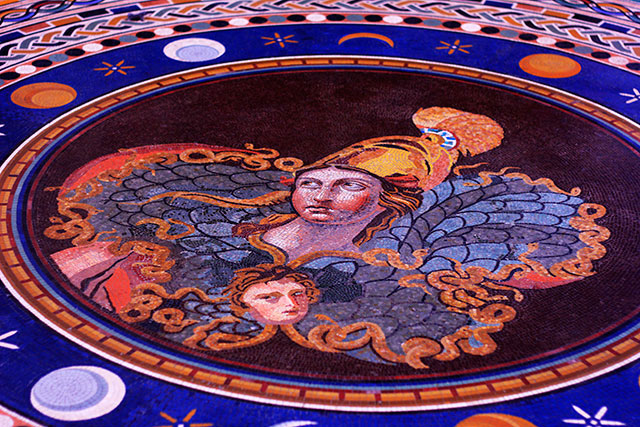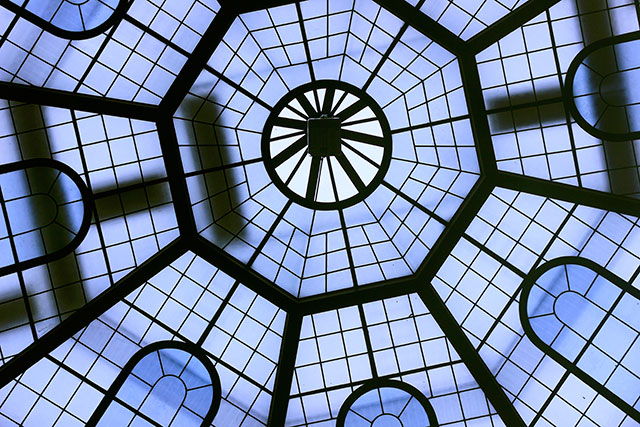
Vatican Museums contain an enormous collection of priceless art. The Popes built up the immense collection, starting from Pope Julius II in early sixteenth century. They were among the first sovereigns to throw open their art collection for viewing by the public. It was Pope Julius who hired Michelangelo, a reluctant sculptor, to repaint the ceiling in the Sistine Chapel.
Egyptian Museum

Queen Tuya was the wife of Pharoah Seti I and the mother of the very famous Ramesses II. Like most Egyptian rulers, she was semi-divine in life. Queen Tuya has been first portrayed by actress Irene Martin in Cecil B. DeMille‘s The Ten Commandments. She also appears in The Prince of Egypt as the adoptive mother of Moses.

The god Anubis, is represented here in the Roman style and clad in a toga, but following an Egyptian iconography. In his right hand he holds a sistrum, while in the left he has the caduceus of Hermes. He is represented by the figure of a man with the head of a jackal.
Going Around Vatican Museums

The museums are open from Monday to Saturday. They open at 10:00 am and close at 6:00 pm. The ticket office is open from 9:00 am to 4:00 pm. Admission is free on the last Sunday of every month.

Entry tickets can be bought at the online ticket office. This will save much time as waiting time in the ticket lines can stretch to one hour or more. Full-price tickets cost Euro 16.00 each. A reservation fee is payable for online tickets at Euro 4.00 each.
There is a strict dress code for visitors. No bare shoulders, shorts or mini skirts. Visitors cannot carry big bags inside. They will have to keep them in the cloak room.

Getting to Vatican Museums
From Roma Termini station, it is 7.2 km to Vatican. From the square opposite the Termini Station, you can take an express bus no. 40 or a regular bus no. 64. It will drop you near St Peter’s Basilica. Alternatively you can take the metro (Metro A, direction Battistini) to Ottaviano Metro Stop, Beware of pickpockets and take care of your valuables.
Fiumicino or Leonardo da Vinci airport of Rome is 29 km away. The taxi fare to central Rome will cost about € 40.

You can get the traditional audio guides on entering the Vatican Museum at the information desk. We paid 7 euros for the audio guide. There are over 400 audio stops available throughout the Vatican Museums. The audio guides are available in ten languages (Italian, English, French, German, Spanish, Chinese, Japanese, Korean, Russian and Portuguese).
Greek and Roman Sculptures

One of the Vatican Museums’ main strengths is the collection of ancient Roman and Greek art. It is in four galleries.

The bearded river god is wearing leaves and holding a sheaf of wheat and horn of plenty.
Room of the Greek Cross

Michelangelo Simonetti designed the Room of the Greek Cross in Vatican Museums in 1780. In the centre of the room is a mosaic with a bust of the goddess Athena. Athena is the Olympian goddess of wisdom and war and the adored patroness of the city of Athens.
Sistine Chapel
Sistine Chapel is the prime attraction for most first-time visitors. Pope Sixtus IV built Sistine Chapel in the Vatican Palace in 1473-81. Giovanni dei Dolci was the architect. It is the pope’s own chapel and is the site of the principal papal ceremonies. The chapel is used by the Sacred College of Cardinals for their election of a new pope whenever the occasion arises.

Michelangelo’s world famous fresco, Creation of Adam, covers the ceiling of Sistine Chapel. It illustrates the Biblical creation narrative from the Book of Genesis in which God gives life to Adam, the first man. Michelangelo began to work on the frescoes for Pope Julius II in 1508, replacing a blue ceiling dotted with stars. The work ended in 1512.
Photography is strictly forbidden inside the chapel. In other parts of the museums, photography without flash is allowed. Use of tripods will need special permissions from museum authorities.

The passages are beautifully decorated and have fabulous paintings on the ceilings. It gives us an indication of the deep pockets of the popes over the centuries.
Modern Masters

The museums have a collection of paintings by modern masters. The collection comprises of works by Vincent Van Gogh, Auguste Rodin, Pablo Picasso, Salvador Dalí, Giacomo Balla, Otto Dix and many others. The photo above shows a painting by Spanish surrealist painter Salvador Dali.
Bramante Staircase

Vatican may not have foreseen, when it commissioned Giuseppe Momo to build a staircase in 1932, that it would become one of the most photographed areas in the museums.
The Spiral Staircase, also called the Momo Staircase or the Bramante Staircase, has two wrought iron stairways: one going up and the other going down. They curve in a double helix. Papal coat of arms decorates the beautiful staircase. The staircase is at the end of the museum visit and all visitors leave by this route.[2]

If you liked the post, you could…
Join more than 5,000 fans of UASATISH by liking us on Facebook, or follow us on Twitter and Instagram.